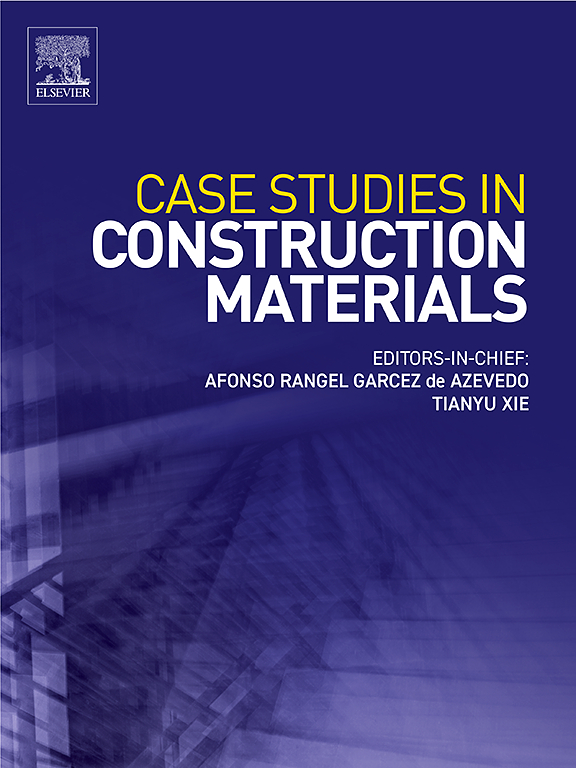Experimental and numerical study on longitudinal structural performance of soil-steel composite bridges
IF 6.5
2区 工程技术
Q1 CONSTRUCTION & BUILDING TECHNOLOGY
引用次数: 0
Abstract
Soil-steel composite bridges (SSCBs) are commonly utilized as overpasses. In the majority of existing studies, the transverse structural performance of SSCBs is primarily focused on, while neglecting their longitudinal structural performance. The aims of this paper are to clarify the longitudinal properties and compensate for the paucity of research on the longitudinal structural performance of SSCBs. In current study, field tests were conducted on a SSCB case bridge in a mining area, both in the construction stage and post-construction stage. Subsequently, longitudinal differences in the structural settlements, deformations, and hoop strains were analyzed. Additionally, a refined three-dimensional finite element model was developed and verified to analyze the transfer behavior of soil pressure above the structure along the longitudinal direction. The results indicate that in the construction stage, the difference in the soil-covered height primarily account for the differences in structural performances along the longitudinal direction. At the end of backfilling, the settlements, deformations, and hoop strains in the middle section are all greater than those in the end sections. In the post-construction stage, further developments of longitudinal structural characteristics occur due to creep deformation of the foundation soil and disturbances from mining trucks. One year after construction, the structural characteristics have stabilized. The maximum settlement reaches −1.014 m and the maximum settlement difference reaches 0.365 m. The differential settlement ratio, at 0.62 %, remains within the 1 % limit specified in the CHBDC code. Due to longitudinal settlement differences, the soil pressure in the higher settlement zone is transferred to the lower settlement zone by the longitudinal soil arching effect, which benefits the load-bearing capacity of SSCBs.
土钢组合桥梁纵向结构性能试验与数值研究
土钢组合桥梁是一种常用的立交桥。在现有的研究中,大多数主要关注的是sscb的横向结构性能,而忽略了其纵向结构性能。本文的目的是阐明sscb的纵向性能,弥补在sscb纵向结构性能研究方面的不足。本研究对某矿区的SSCB箱式桥梁进行了施工阶段和施工后阶段的现场试验。随后,分析了结构沉降、变形和环向应变的纵向差异。此外,建立并验证了精细化的三维有限元模型,以分析结构上方土压力沿纵向的传递特性。结果表明,在施工阶段,土覆盖高度的差异是结构纵向性能差异的主要原因。充填结束时,中段沉降量、变形量、环向应变均大于端部。在施工后期,由于地基土的蠕变变形和矿用卡车的干扰,纵向结构特征进一步发展。施工一年后,结构特征稳定。最大沉降量为−1.014 m,最大沉降差为0.365 m。差异沉降率为0.62 %,保持在CHBDC规范规定的1 %限制内。由于纵向沉降差异,高沉降区土压力通过纵向土拱效应向低沉降区转移,有利于sscb承载能力的提高。
本文章由计算机程序翻译,如有差异,请以英文原文为准。
求助全文
约1分钟内获得全文
求助全文
来源期刊

Case Studies in Construction Materials
Multiple-
CiteScore
7.60
自引率
19.40%
发文量
842
审稿时长
63 days
期刊介绍:
Case Studies in Construction Materials provides a forum for the rapid publication of short, structured Case Studies on construction materials. In addition, the journal also publishes related Short Communications, Full length research article and Comprehensive review papers (by invitation).
The journal will provide an essential compendium of case studies for practicing engineers, designers, researchers and other practitioners who are interested in all aspects construction materials. The journal will publish new and novel case studies, but will also provide a forum for the publication of high quality descriptions of classic construction material problems and solutions.
 求助内容:
求助内容: 应助结果提醒方式:
应助结果提醒方式:


